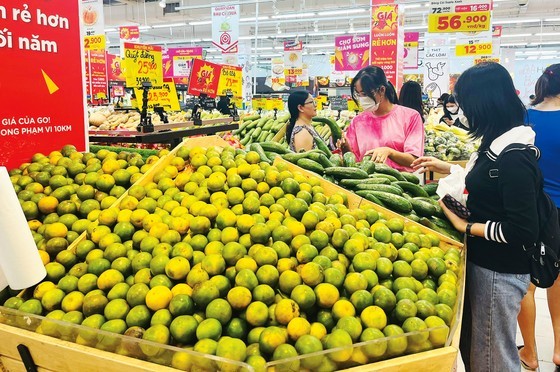 |
High prices make it sweet harvest for fruit farmers |
Mr. Xuan said that traders were flocking to orchards offering VND11,000-VND13,000 a kg of white flesh dragon fruit and VND40,000-VND43,000 a kg of red flesh dragon fruit and VND30,000-VND32,000 VND a kg of smaller red flesh dragon fruit. Deducting all farming expenses costs, farmers earned a hundred million Vietnamese dong per crop.
Meanwhile, from before the Lunar New Year until now, almost all traders have bought the fruit in Binh Thuan Province, which is considered the capital of dragon fruit. No more booths of dragon fruit with great discounts on the roadside were seen or farmers were no longer feeding their cows with dragon fruits like in previous years.
Mr. Huynh Canh, Chairman of Binh Thuan Dragon Fruit Association, said that the price of dragon fruit has been stable since the beginning of the year at between VND12,000-VND20,000 a kg, farmers are quite delighted as the consumption market is stable and the fruit can be exported to many countries.
Durian farmers in Da Huoai District of the Central Highlands Province of Lam Dong made substantial profits when traders buy the fruit at VND65,000-VND70,000 a kg of Dona variety in the orchard and VND45,000-VND50,000 a kg of Ri6 variety.
Huynh Thanh Hoa, an owner of a durian garden, said that most durians are sold to China and a few are consumed domestically while Nam Hien, who has 10 hectares of durian near Nam Cat Tien National Park, said that the garden has not yet been harvested, but more than a month ago, traders paid in advance for VND75,000 a kg, much higher than that prior years.
As the largest consumer market in the country, fruit sold in Ho Chi Minh City is not too expensive at this moment. Durian sellers on roads such as Truong Chinh in Tan Binh District, and Nguyen Tri Phuong in District 10 said the Ri6 variety was sold from VND70,000-VND85,000 a kg. Some other fruits such as avocado, mangosteen, and rambutan are also sold in abundance at some traditional markets in districts 3 and Tan Binh. Prices of avocado ranged from VND25,000-VND30,000 a kg while Thai rambutan fetched VND30,000 a kg and mangosteen was at VND40,000- VND50,000 a kg.
In addition to traders purchasing at stable prices, supermarkets, or tourism programs helped consume domestic fruits in the past time. Typically in Ho Chi Minh City, a series of activities to support gardeners such as fruit festivals and fruit week are taking place in District 8, Cu Chi District, Suoi Tien Cultural Tourist Area, as well as at the supermarkets including MM Mega Market, Go!, BigC.
According to a retail supermarket in Ho Chi Minh City, this summer, city dwellers have eaten up to hundreds of thousands of tons. For instance, 800 supermarkets of Saigon Co.op are launching a promotion campaign to sell domestically grown fruits at the fruit festival to stimulate consumer demand with discounts from 20 percent to 30 percent.
Central Retail Vietnam Group has also signed cooperation agreements with many localities to sell Vietnamese agricultural products, including fruits in order to help farmers.
According to Ms. Nguyen Thi Bich Van, Communications Director of Central Retail Vietnam, this year the group is expected to consume about 300 tons of Luc Ngan lychee, along with hundreds of tons of other fruits such as mango, durian, and avocado.
In a talk with an SGGP newspaper reporter, Mr. Dang Phuc Nguyen, General Secretary of the Vietnam Fruit and Vegetable Association said that in the first 6 months of the year, the revenue from fruit export has reached more than US$2.2 billion taking the year’s turnover to $4.5 billion, one and a half times higher than last year. In which, durian and dragon fruit products account for a high proportion. In particular, durian has the opportunity to become a billion-dollar item when more planting areas have been granted official export codes to China. In general, Vietnam's fruit and vegetable exports in the second half of the year will be better.
























